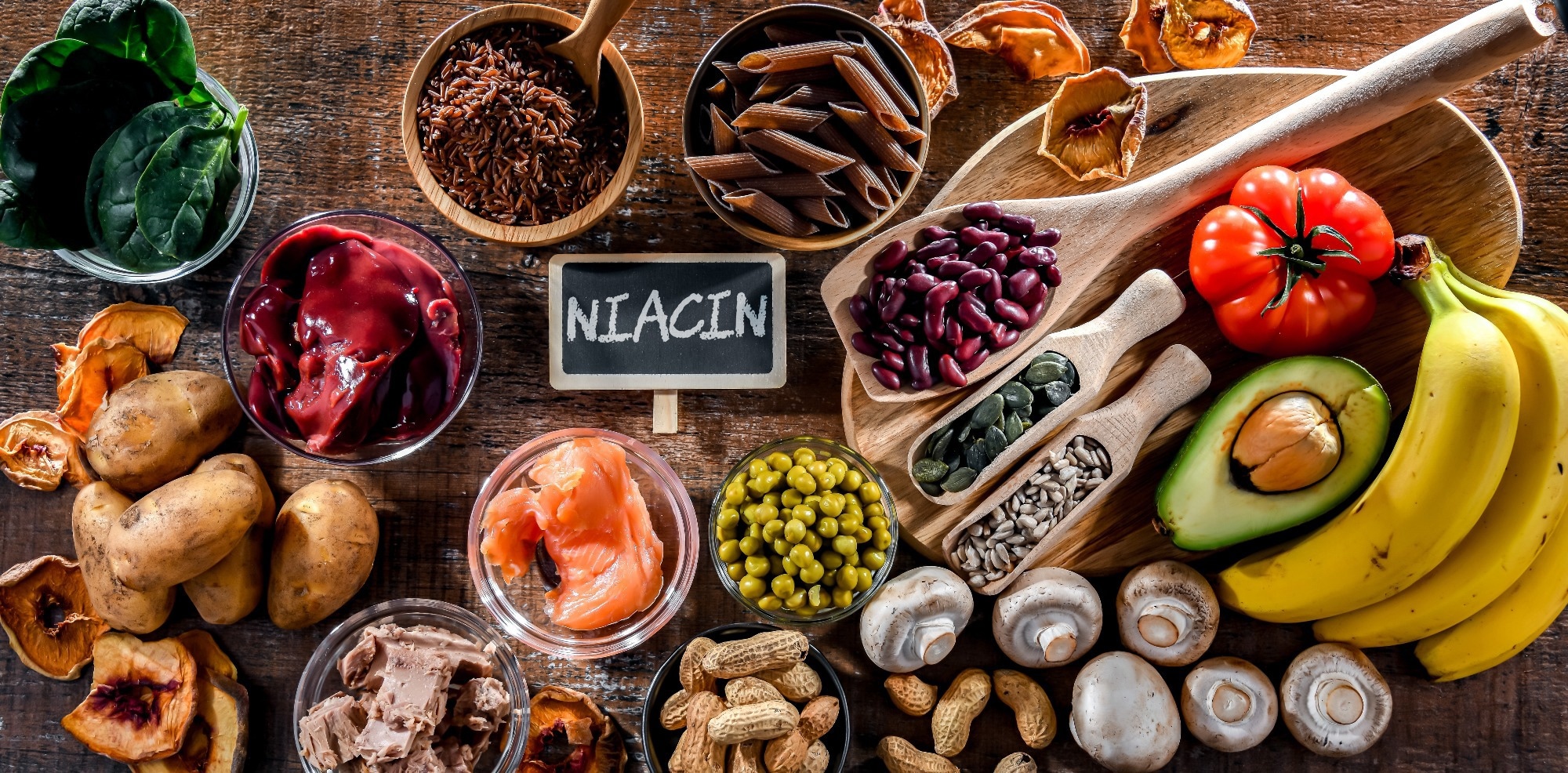In a recent large-scale prospective cohort study published in JAMA Network Open, researchers evaluated whether higher dietary niacin intake lowers the risk of all-cause, heart and cerebrovascular disease(s)-related mortality in adults with non-alcoholic fatty liver disease (NAFLD) in the United States (US).
 Study: Dietary Niacin Intake and Mortality Among Individuals With Nonalcoholic Fatty Liver Disease. Image Credit: monticello/Shutterstock.com
Study: Dietary Niacin Intake and Mortality Among Individuals With Nonalcoholic Fatty Liver Disease. Image Credit: monticello/Shutterstock.com
Background
The burden of NAFLD is surging worldwide, with the estimated prevalence of the disease reaching 32.4% globally and 47.8% in the US. Even the NAFLD mortality has doubled in the past three decades globally.
Existing evidence indicates that cardiovascular diseases (CVDs) are the primary cause of death among patients with NAFLD.
Yet, no prospective studies have assessed the association between nutrition, specifically, niacin intake and mortality risk in patients with NAFLD.
A previous animal study showed that niacin supplementation increased nicotinamide adenine dinucleotide (NAD) levels to help revive a fatty liver, and a study with human subjects showed how it improved muscle performance.
Niacin, or vitamin B3, is a precursor of NAD and nicotinamide adenine dinucleotide phosphate (NADP) synthesis, two pyridine coenzymes that play essential roles in several metabolic, energy metabolism, and redox reactions.
Preclinical studies have also shown that niacin inhibits or reverses inflammation and hepatic steatosis to prevent fibrosis.
About the study
In the present study, researchers used data from US adults aged ≥20 who participated in eight cycles of the National Health and Nutrition Examination Survey (NHANES) spanning 2003 to 2018.
They categorized all into three groups of individuals aged ≤39, 40-59, and ≥60.
They self-reported data on hypertension, dyslipidemia, and diabetes. Other study covariates were race/ethnicity, educational status, income, body mass index (BMI), use of dietary supplements, physical activity, and smoking status.
The team ascertained mortality by linking the NHANES data to the National Death Index records through December 31, 2019.
Likewise, they measured dietary niacin intake using a standardized Automated Multiple-Pass Method (AMPM), which involved two 24-hour dietary recall interviews, one conducted in person and the other over the telephone, to collect data on the types and food quantities consumed by each participant.
They calculated their daily dietary niacin intake based on the average of the participants’ two diet recalls.
Statistical analysis in this study incorporated unweighted frequencies and weighted percentages for categorical variables, while they used medians and IQRs for continuous variables.
The researchers used the weighted Cox proportional hazards models to evaluate the relationships between dietary niacin intake and all-cause and CVD mortalities, presenting results as hazard ratios (HRs) and 95% confidence intervals (CIs).
Additionally, they used restricted cubic spline analysis to investigate the nonlinear associations between dietary niacin intake and mortality, further stratifying them to assess interactions with various factors.
Results
All in all, 80,312 people participated in NHANES from 2003 to 2018, of whom 6,540 had a Fatty Liver Index (FLI) of ≥30; however, from these, only 4,315 had confirmed NAFLD, and most were men.
The baseline characteristics of the study participants varied based on dietary niacin intake; for instance, those with higher dietary niacin intake were younger and often male.
The authors noted an association of higher dietary niacin intake (≥26.7 mg/d) with a 30% lower risk of all-cause and ~50% lower risk of CVDs-related mortality among NAFLD patients.
The latter association became insignificant after adjustment for potentially confounding variables other than age and gender.
Moreover, the evidence of a nonlinear association between dietary niacin intake and these two types of mortalities was lacking.
In subgroup analyses, the association of higher niacin intake with mortality risk was robust only for NAFLD patients without diabetes compared to the reference group.
The subgroups with and without diabetes had HRs of 0.82 and 0.58 for all-cause mortality compared to the reference group, respectively, P= 0.04 for interaction.
In the subgroup of adults with vitamin B6 intake <1.7 mg, the HR of all-cause mortality was 0.26, indicating they may benefit more from niacin intake via diet. Notably, vitamin B6 is essential for the biosynthesis of niacin and its metabolism.
A daily niacin dose of a minimum of 20 mg also meets the requirement for NAD+ synthesis, any dysregulation of which is associated with CVD, obesity, and neurodegenerative diseases.
Stratified and sensitivity analyses further demonstrated the robustness of these results.
Conclusions
Overall, the results of the present study conducted among NAFLD patients suggest an association between higher dietary niacin intake and lower all-cause mortality.
However, there was no inverse association between dietary niacin intake and the risk of CVD mortality.
Future studies should investigate the dose-response correlation of dietary niacin intake with mortality to determine its optimal dosages for patients with NAFLD.








;Resize=(1200,627)&impolicy=perceptual&quality=mediumHigh&hash=0a83d323df11ad640877d566709790d2ae64aa556ee2a35df329aed2c1f249ff)
